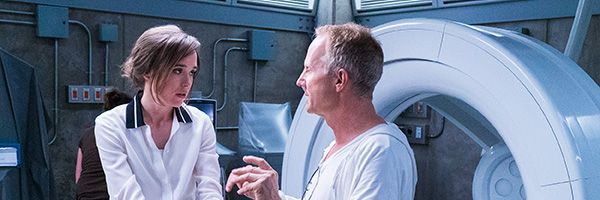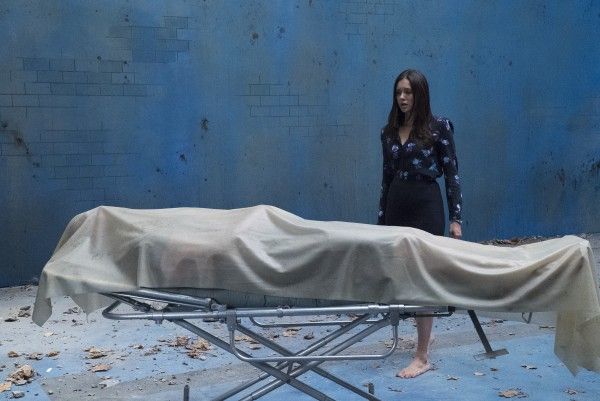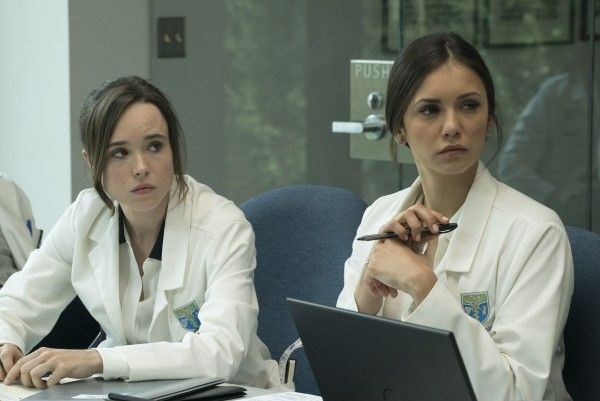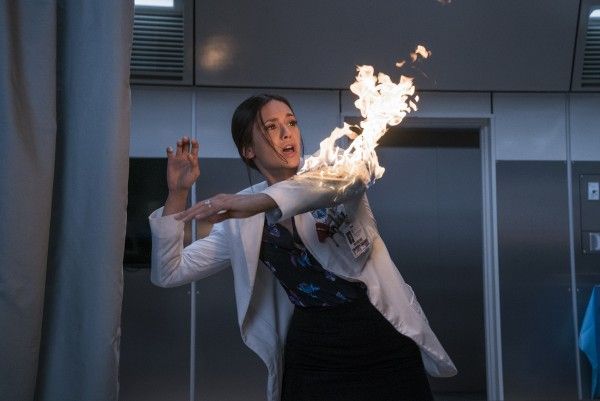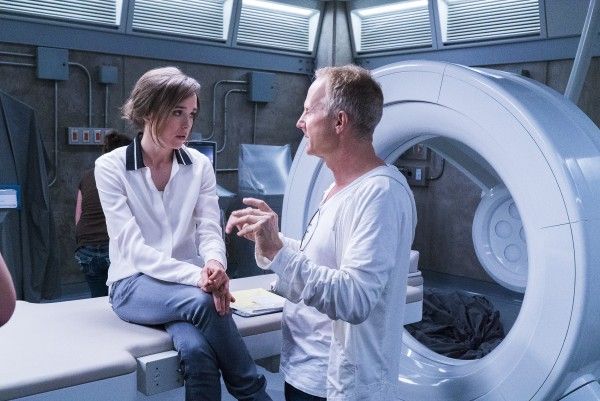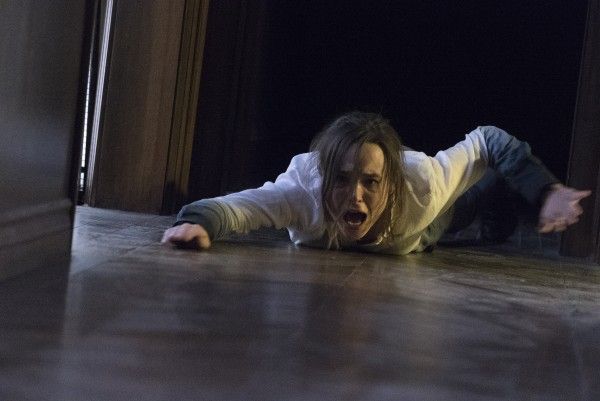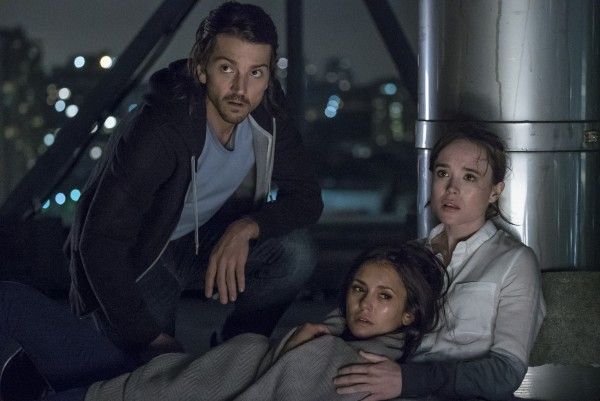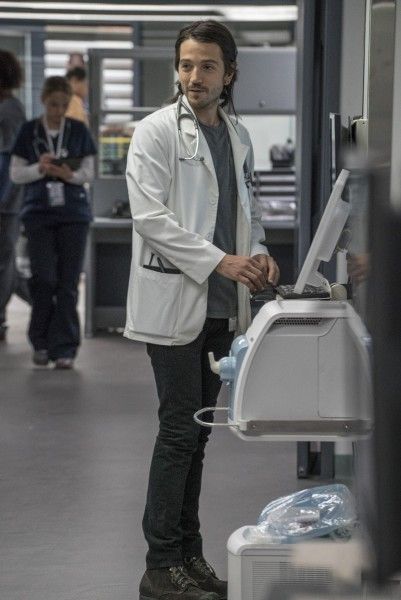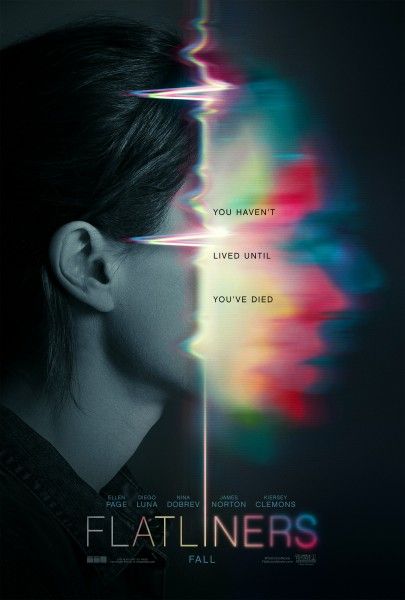With the thriller Flatliners now playing in North American theaters, last week I landed an exclusive interview with director Niels Arden Oplev. He talked about what it was like helming his first big Hollywood movie, what he learned from test screenings, deleted scenes, if he’d want to release an extended cut on Blu-ray, how the put together his cast, and a lot more. In addition, he revealed why he cut a two minute Kiefer Sutherland scene out of the movie and the way it connected this new Flatliners to the first film.
If you’re not familiar with Flatliners, the film follows a group of young med students who purposefully die and bring each other back to life to experience life after death … without actually dying for real. What they find, instead, is a kind of netherworld that ends up opening a portal into their waking lives that incorporates past tragedies. The movie also stars Ellen Page, James Norton, Kiersey Clemons, Nina Dobrev, and Diego Luna.
Collider: I think this is your first big Hollywood movie. Am I mistaken?
Niels Arden Oplev: Yeah, it's my first, what you would call, a “Hollywood studio film.” That being said, doing a film for one of the big five, right?
Did you have any preconceived notions about what it would be like to work in the Hollywood system? And how did it actually end up being?
OPLEY: Well, I've shot a fairly big independent film in US, in 2012, the one called Dead Man Down. That was an interesting experience, because it was financed by so many bits and pieces that one ended up having so many producers that in the end I couldn't remember all their names, and so my expectations was going in and doing a film for Sony, that I would be dealing with a lot less people that was trying to influence the film in the direction that they wanted it to go, compared to the vision that I had for the film, so that's been a much more pleasurable experience.
Of course, shooting in the Hollywood studio system compared to shooting films in Europe, where I have final cut ... Here, you have to be a little bit more of a politician and extremely good at explaining and keeping your vision for the film straight and convincing people why that is better than another way for instance.
You also have to ... kind of have to be open to let the film be an organic kind of material that can alter in the sense that the good advice that you get during the process, that you can incorporate that into your vision and into the film. So that's a balance.
One of the things that I've found in talking to directors who direct here in Hollywood is that the studios are very interested in the test-screening process and focus groups and incorporating that kind of stuff into the movie-making. When you started showing the movie to friends and family or test screenings, whatever, was there anything that you learned while you were test screening that impacted the finished film?
OPLEY: Yeah, there were certain things, and the funny thing is that I've actually used to a lesser extent ... but even back in Europe for my films there, I've definitely used focus groups and test screenings with questionnaires to try to see does people understand what we think they're going to understand at this point? Are they confused about something? All of that. It is good tools for finishing a film in the editing table, for making it the best possible film for an audience.
Sometimes, people can have a tendency to hang their hat on ... that's a dangerous expression, I suppose ... on any little quote that they can pull out from one person in the audience, you know, that one person said, "I was confused about that", and then that becomes the argument for changing something.
So it's kind of like a tool, that you have to tread very carefully with this tool, but once you can see that a lot of people are confused about the same thing, you need to adjust. One of the things that we definitely ran into was a very interesting thing that in the old film and the new film, exactly the same concept, that some of the people that are haunting our characters are dead, and some of them are still alive.
We kind of ran into the question that in the 27 years that has passed between the two films, the rules of scariness has become very rigid in the sense that the audience was saying, "Well wait a minute. How can you be haunted by somebody who isn't dead? That's not possible."
So that definitely altered some of the film, where we were taking more of an effort to show that this might all happen inside their own head. If you are ... if you took a drug and started hallucinating, then of course you could get haunted by someone who was not dead, because it's all in your own head, right?
That was one of the things that we went to a greater extent to open that thought up, saying well this film breaks no film rule. This is a psychological thriller. This is much more character-driven, and the scares are ... each of them are anchored in the character, in the past of each character, so it's not just like crazy things falling from the ceiling or something like that. There's a specific reason why that fear is there and what the impact ... and it could be somebody who has died, because part of it is in fact unaired. So that is a good example of what you're talking about.
I ask this of all directors, and I will ask this to you: How long was your first cut compared to the finished film?
OPLEY: I think there's a difference on 15 ... 10 to 15 minutes, which is really not that much. Yeah, I mean it's an experience that I have from the go, with The Girl With The Dragon Tattoo where I actually had a quite good version of the film, that was three hours long. And then for a moment, since I have final cut, I was threatening the producers to make a David Lean kind of screening. With a big break in between were you can go the bathroom and buy some more candy or whatever.
And then I kinda came to my senses and I called in 22 people, of my good friends and filmmakers, and I said to them. "Here's this three hours version what do you think"? And they were very clear saying, "You actually got a good version, it's going to be fucking brilliant if you cut it down with half an hour," and that's how that film became the length. That's why it feels like it's a big film, it feels like it's two hour film that's two and half hours long. And so I'm definitely not afraid of trying to slim down a film to make the experience go faster. So I think the difference is really only about 15 minutes.
Was there one scene or two scenes that came really close to being in the finished film, that ultimately at the last second or whatever you decided that's just not going to work?
OPLEY: Yeah, there's one scene that I really liked and I had to lift it out and it's going to live its life in the deleted scene on the DVD and Blu-ray format. And there was a scene with Kiefer [Sutherland], where he told, it was in the very end of the film, and he told this long, strange story about a famous doctor, that had death as his Godfather. And he does it super well and it like two minutes long, and Diego [Luna] and Kiersey [Clemons] and James [Norton] are sitting there, as their characters, staring at him thinking “what the fuck is going on with him.”
And he kinda ends up saying you, "You can't cheat death, and believe me, I know." Which... "Trust me, I know." Which was a scene that the older audience liked. Because, it was like, "Oh, he is, he has changed his name but he is Nelson from the old film." But the younger audience didn't understand diddly-squat of that scene. They were like, "Why... What the hell is this guy talking about?" So in the end, it slowed down the ending and I just decided that the younger audience, the new generation of “Flatliners” is mainly who this film is for. And the older audience who can remember the old film, they would you know who Kiefer's character is, maybe. It's ambiguous but they'll think that he is him anyhow and then that's where it'll have to live. But it still is a pretty great scene.
Do you think when it hits on Blu-ray, you'll do like an extended cut, or the scenes you add are just going to be in the deleted scenes section?
OPLEY: I only think they're gonna be in the deleted section, because I've looked through the material and really the only scene that ... I've pulled up scenes there and I have already done that work. And some of the scenes are fun to see but they're not, they don't hold the relevance enough to deserve to be in the finished film. Except for that one. That's the one with Keifer where you could say, "This could have being in there or it could not," and for the older audience, they would probably have enjoyed it. But it's a very strange scene. I was actually thinking about cutting it in as running while the end crawl is running. But I swayed away from that idea too. I think it's too confusing for a younger audience, but I think it will make sense for film buffs and fans in that sense.
You know something, I totally understand where you're coming from because, as someone who has seen the original, that's a scene that I would have loved to have seen in the film. But I also understand that this movie really is for a new generation.
OPLEY: Yeah, it definitely is. It's like a reinterpretation of the old film, its female driven. It’s taken, I think by Kiefer in the film, it's paying its homage to the cult classic, it's definitely- there are hints in the film, like “it's a good day to die” and all of that. Saying yes the film acknowledges that it has an inheritance, it’s standing on the shoulder of another film. But yet at the same time it is a reinterpretation of a piece of art that's already done. And it's relevant now because it portrays a world of great competition, really stiff competition for young people. It portrays a world where you don't know what's real or not, and it has really well defined, multilevel characters and female driven. So that's what makes it a modern film in today. So I think we fulfilled that by shooting it that way.
Often when someone gets on a project, the story can change dramatically along the way. Sometimes it's the script you develop it's exactly what end up on screen. Were there any changes for the story line as you were developing the project and filming that happened? Or was it always the story that I saw, was that like what set out to make from day one?
OPLEY: Well, I mean in its essence, it's definitely the story we set out to make but there was certain things that we decided to alter in the pre-production and during shooting was we decided that the scary scenes in the film would have to be scarier. I mean that they, as a rule always had to be anchored in the person's, in the characters, past, but that the moment had to have more tension. And be more-scary. So we altered some certain scenes into being more, that it could be more of a fun moment for the audience, where you actually kinda jump in your seat and stuff.
Because, it felt like that would make the film more like a thrill ride, more fun, because it is meant to be an amusement park ride. It's like a sexy, scary, fun film. And by making it more jumpy in certain places without going over board, I think gained a younger feel to it in a way that was very good for the film. So that was one of the things that we altered, that as a psychological thriller, it should be allowed to have like some bonus scares if you could say. And I think that came out very well and it was a lot fun to do.
I definitely have to ask you about the cast. Can you talk a little bit about how it all came together with the cast?
OPLEY: Well I think that, I mean obsessed with casting. It's like whenever I go on to a new project, it's really, really important for me that the ... I don't believe that any actor can play any part. I think that you have to find an emotional key between the actor and the character, in order to make that character portrayed on screen successfully. So I was super pleased that Ellen [Page] and Diego were kinda like my two cornerstones that said yes to participate in this film first and they're both actors' known for really, really high quality work, and not necessarily doing wide audience studio scary film. So it was a lot of fun, that they felt that the script had so much layers and meat of the characters, that they would want to participate and I think that Ellen is spot on in her aura of intelligence.
So that she has some intelligence and determination that makes her... She transformed that into a character that makes her really high creditability. That we believe that she is the one that starts all this up and instigated the whole plot. I think that the level of life experience and kind of sensitive that Diego has transformed very well into a Mexican hero that saves all beautiful American girls. I think that's absolutely fabulous. That you have a hero that was a fireman and they came in to the top medical school by his sheer work and a city scholarship or something. And that he has that wise-ness to him, and yet that sensitivity that maybe we wouldn't see in a typical American hero.
So some of the elements like that are great, and I think that Nina [Dobrev] has that, she definitely makes a character that is a typical character that will be in some ways a character doing that “thing.” So in the classic American culture, you have like the rich white girl born on upper class cultural silver spoon, that everybody always thought was going to be a doctor and all of that. And I think she transformed that into something, into a character of sensibility that actually has to reveal herself and face stuff that she has done and that makes her become, her arch of development very interesting.
So, that worked out great both for Kiersey and James. I think for James it was super important that he would have that recklessness of here is a guy that goes to medical school for the ladies, for the parties, for the drugs. And you know that he's the only one in the group that will actually press that button and send somebody into death for the very first time. As he does with Ellen, so there's a very high creditability in him and that feeling, that in that moment we think, "Oh yes, that's why she conned him down there. He's the one that will actually be reckless enough to do this, because he can't say no to an adventure.
And so Kiersey character is saying that, this young person, she's kinda like, I don't know if that's what you call it in English, the Benjamin, the youngest person of the group. And she's up against this tiger mom that's sitting her, and she's up against all this stuff that she has to learn and the pressure and all of that. And I think she definitely has this sense to her, being the youngest and the sense of finding herself and taking this confrontation with her mom, that is super hilarious and gaining, what you call it, independence as a young person. I think she does that spot on. And I think it's very identifiable for young people, especially in America and Asia to have to go through that. So, that's all the concentrations that one has when you do something as difficult as casting an example of five people, that all have to have great chemistry among them. So that you, in the film, feel that they grow into a friendship.

